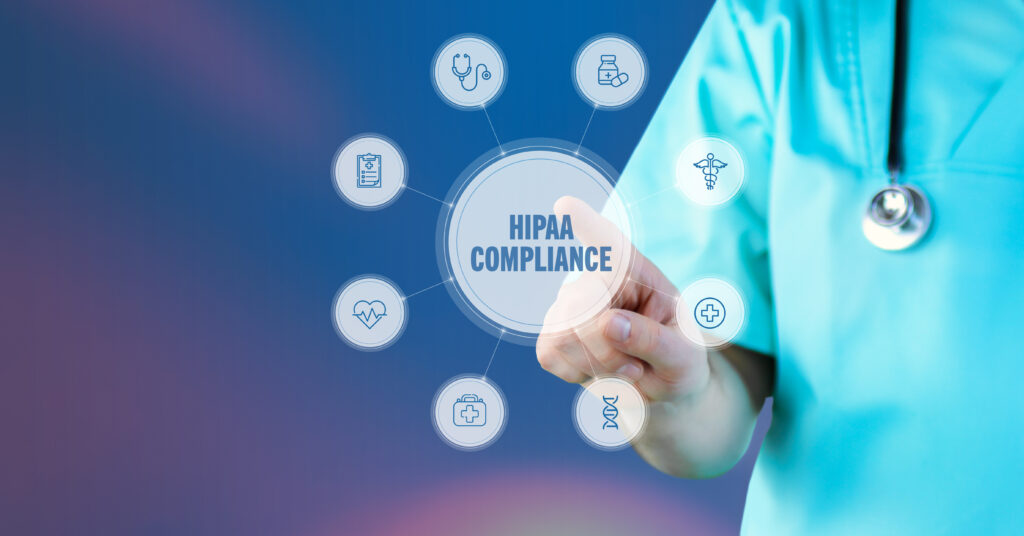Telemedicine’s rapid growth demands smarter HIPAA compliance solutions. As cyber threats evolve and regulations tighten, healthcare organizations need agile, comprehensive protection for patient data. Ready to simplify your telemedicine compliance strategy? Learn more about ZenGRC’s comprehensive HIPAA capabilities and schedule a demo today to gain clarity and confidence in your compliance journey.

Telemedicine is experiencing unprecedented growth as patients increasingly embrace this convenient alternative to traditional healthcare. From virtual appointments and remote consultations when sick to prescription refills, digital health platforms are transforming how we access medical care. As healthcare becomes integrated into our online lives, these platforms shoulder a critical responsibility: protecting sensitive patient data through unwavering HIPAA compliance.
For healthcare administrators, this seismic shift creates a perfect storm: exponentially increasing virtual visits, evolving HIPAA requirements, and the constant threat of costly data breaches. While telemedicine has revolutionized patient care, it has also created unprecedented complexity in maintaining HIPAA compliance—requiring a fundamental evolution in how we protect patient privacy and secure health data in virtual environments.
The stakes are even higher as proposed HIPAA Security Rule changes signal a decisive shift from flexible guidelines to mandatory implementations. These upcoming changes will require organizations to fundamentally rethink their approach to compliance in virtual care delivery.
The New Frontier of HIPAA Compliance
HIPAA requirements continue to expand and transform, demanding that healthcare organizations maintain strict compliance while preparing for future changes. Proposed Security Rule changes are establishing new mandatory technical safeguards, fundamentally changing how organizations approach compliance. These changes include required encryption for all protected health information, mandatory multi-factor authentication, and comprehensive asset management—with specific timelines for implementation and verification.
Administrative safeguards are also becoming more stringent. Organizations will need to maintain detailed documentation of all security policies and procedures, conduct annual compliance audits, and implement regular penetration testing. This evolution in requirements means healthcare organizations must build flexibility into their compliance programs to accommodate both current and upcoming changes.
Even physical safeguards are becoming more complex in the telemedicine era. Organizations must establish clear policies for secure device management and workplace security measures that can evolve alongside changing HIPAA guidelines. With the rise in remote healthcare delivery, these physical safeguards must be both robust and flexible enough to address new scenarios and requirements as they arise.
Navigating a Shifting Landscape
As the adoption of telemedicine continues to rapidly increase, compliance requirements and the need to protect patient data must keep pace. The healthcare industry is undergoing changes in how HIPAA compliance is enforced, with proposed updates that strengthen requirements and establish mandatory technical safeguards. These changes reflect the growing sophistication of cyber threats and the critical need to protect patient data in virtual care settings.
Because technology is ever evolving and cyber threats are becoming more sophisticated, organizations must be more vigilant than ever in maintaining compliance while keeping operations efficient. Telemedicine platforms face several critical challenges
- Managing an increasing volume of virtual-patient interactions while ensuring each meets HIPAA standards
- Protecting against emerging cybersecurity threats that specifically target healthcare data
- Adapting to rapid technological changes while maintaining continuous compliance
- Coordinating compliance across multiple systems, providers, and access points
- Documenting and tracking compliance in real-time across all virtual care activities
These challenges, combined with upcoming regulatory changes, underscore why it’s more critical than ever to have an agile compliance system that can adapt quickly to new requirements and threats. Organizations need solutions that can scale and evolve as compliance requirements become more stringent and technically specific. Static, manual compliance processes simply can’t keep pace with the dynamic nature of modern healthcare delivery.
Beyond Traditional Compliance Methods: The Need for Modern Solutions
Traditional compliance tools and manual processes have become dangerous liabilities, particularly as HIPAA requirements become more stringent and technically specific.
Healthcare administrators facing these outdated methods are struggling with an overwhelming array of challenges. Teams spend countless hours manually tracking compliance across multiple systems, while the risk of human error in documentation and monitoring continues to grow. Response times to potential compliance issues lag behind threats, as staff struggle to maintain proper audit trails across expanding virtual platforms. Meanwhile, compliance management costs continue to rise while real-time visibility into compliance status remains limited.
Given these mounting challenges, modern telemedicine platforms require a fundamentally different approach to compliance monitoring. The sheer volume and velocity of virtual care delivery demand sophisticated systems that can track and verify compliance in real time. Virtual consultations, data transfers, and patient interactions all have HIPAA compliance implications that require consistent monitoring and verification.
Healthcare organizations must now maintain comprehensive oversight across an expanding network of providers, platforms, and access points. This includes tracking potential vulnerabilities, maintaining detailed documentation of compliance activities, and scaling security measures alongside growing virtual care services. A proactive approach with automated monitoring and real-time alerts has become essential for maintaining compliance without overwhelming healthcare teams.
The Evolution of Compliance Management
As telemedicine continues to reshape healthcare delivery, the complexity of maintaining HIPAA compliance grows. Healthcare organizations can no longer afford to rely on manual processes and disconnected systems. With HIPAA’s strict enforcement—where a single slip-up can cost $500,000 and repeated violations can result in fines up to $1.5 million—the stakes are simply too high.
ZenGRC is your all-in-one solution for HIPAA compliance. The platform’s user-friendly dashboard and automated workflows significantly reduce the administrative burden, while providing real-time insights into your compliance status. Through comprehensive risk management and universal control mapping, organizations can streamline their compliance efforts and maintain a strong security posture.
Ready to transform your telemedicine compliance program? Learn more about ZenGRC’s complete HIPAA capabilities and schedule a demo today to see how we can help you achieve clarity and confidence in your compliance journey.
